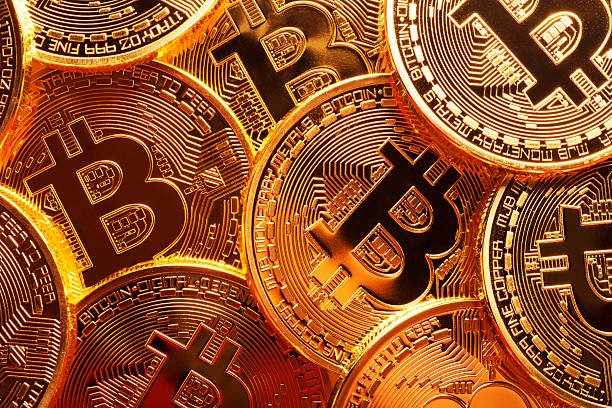 Everything you need to know about Bitcoin, its mysterious origins, and the many alleged identities of its creator
Everything you need to know about Bitcoin, its mysterious origins, and the many alleged identities of its creator
Zoë Bernard, Business Insider 13h 3,622
For the record, Bitcoins aren't real coins.
Thomson Reuters
Since it was created in 2009, Bitcoin has experienced significant highs and lows. Late last year, the cryptocurrency surpassed an $11,000 valuation for the first time in history.
Bitcoin is considered the preeminent cryptocurrency in the world, but there's still plenty of mystery surrounding its creation. Who came up with Bitcoin? Was it created by more than one person? And who is Satoshi Nakamoto?
Here's a rundown on the currency's strange beginnings:
View As: One Page Slides
Get the latest Bitcoin price here.>>
EXCLUSIVE FREE REPORT:
The Bitcoin 101 Report by the BI Intelligence Research Team.
Get the Report Now »
EXCLUSIVE FREE REPORT:
The Bitcoin 101 Report by the BI Intelligence Research Team.
Get the Report Now »
Read the original article on Business Insider . Copyright 2017. Follow Business Insider on Twitter .
SEE ALSO: There's a little-known Uno rule that changes the game — and you probably had no clue it existed »
FOLLOW US: INSIDER is on Facebook »
More: Features Satoshi Nakamoto Tech
Bitcoin
In 2008, the first inklings of bitcoin begin to circulate the web.
In August 2008, the domain name
bitcoin.org was quietly registered online. Two months later, a paper entitled 'Bitcoin: A Peer-to-Peer Electronic Cash System' was passed around a cryptography mailing list.
The paper is the first instance of the mysterious figure, Satoshi Nakamoto's appearance on the web, and permanently links the name "Satoshi Nakamoto" to the cryptocurrency.
On January 3, 2009, 30,000 lines of code spell out the beginning of Bitcoin.
Bitcoin runs through an autonomous software program that is 'mined' by people seeking bitcoin in a lottery-based system. Over the course of the next 20 years, a total of 21 million coins will be released.
But Satoshi Nakamoto didn't work entirely alone.
Among Bitcoin's earliest enthusiasts was Hal Finney, a console game developer and an early member of the "cypherpunk movement" who discovered Nakamoto's proposal for Bitcoin through the cryptocurrency mailing list.
In a blog post from 2013, Finney says he was fascinated by the idea of a decentralized online currency. When Nakamoto announced the software's release, Finney offered to mine the first coins — 10 original bitcoins from block 70, which Satoshi sent over as a test.
Of his interactions with Nakamoto, Finney says, "I thought I was dealing with a young man of Japanese ancestry who was very smart and sincere. I've had the good fortune to know many brilliant people over the course of my life, so I recognize the signs."
Finney has flatly denied any claims that he was the inventor of Bitcoin and has always maintained his involvement in the currency was only ever secondary.
In 2014, Finney died of the neuro-degenerative disease ALS. In one of his
final posts on a Bitcoin forum , he said Satoshi Nakamoto's true identity still remained a mystery to him. Finney says he was proud of his legacy involving Bitcoin, and that his cache of bitcoins were stored in an offline wallet, left as part of an inheritance to his family.
"Hopefully, they'll be worth something to my heirs," he wrote.
As of today, one bitcoin is worth more than $10,000.
Nearly a year later, Bitcoin is slowly on its way to becoming a viable currency.
In 2010, a handful of merchants started accepting bitcoin in lieu of established currencies.
One of the first tangible items ever purchased with the cryptocurrency was a pizza. Today, the amount of bitcoin used to purchase those pizzas is valued at $100 million .
The cryptocurrency began attracting interest from tech elites, as well. In 2012, Cameron and Tyler Winklevoss purchased $10 million worth of bitcoin , and, in less than a year their investment had more than tripled. It's been estimated the Winklevoss twins
own 1% of all available bitcoin .
In 2011, the Silk Road, an online marketplace for illegal drugs, launches. It uses bitcoin as its chief form of currency.
Bitcoin is inherently traceless, a quality that made it the ideal currency for facilitating drug trade on the burgeoning internet black market. It was the equivalent of digital cash, a self-governing system of commerce that preserved the anonymity of its owner.
With Bitcoin, anyone could take to the Silk Road and purchase cannabis seeds, LSD, and cocaine without revealing their identifies. And the benefit wasn't entirely one-sided, either: in some ways, the drug trafficking site legitimized Bitcoin as a means of commerce, even if it was only being used to facilitate illicit trade.
Two years later, the mysterious figure known as "Satoshi Nakamoto" disappears from the web.
Authors get paid when people like you upvote their post.
If you enjoyed what you read here, create your account today and start earning FREE STEEM!
If you enjoyed what you read here, create your account today and start earning FREE STEEM!
Hi! I am a robot. I just upvoted you! I found similar content that readers might be interested in:
http://www.businessinsider.com/bitcoin-history-cryptocurrency-satoshi-nakamoto-2017-12
Downvoting a post can decrease pending rewards and make it less visible. Common reasons:
Submit